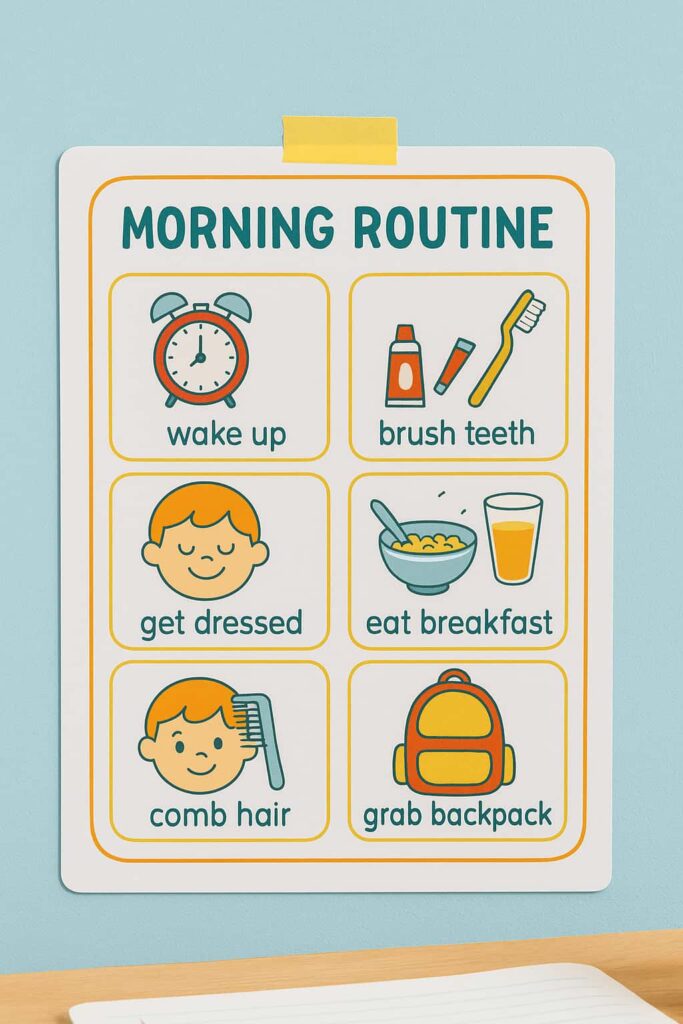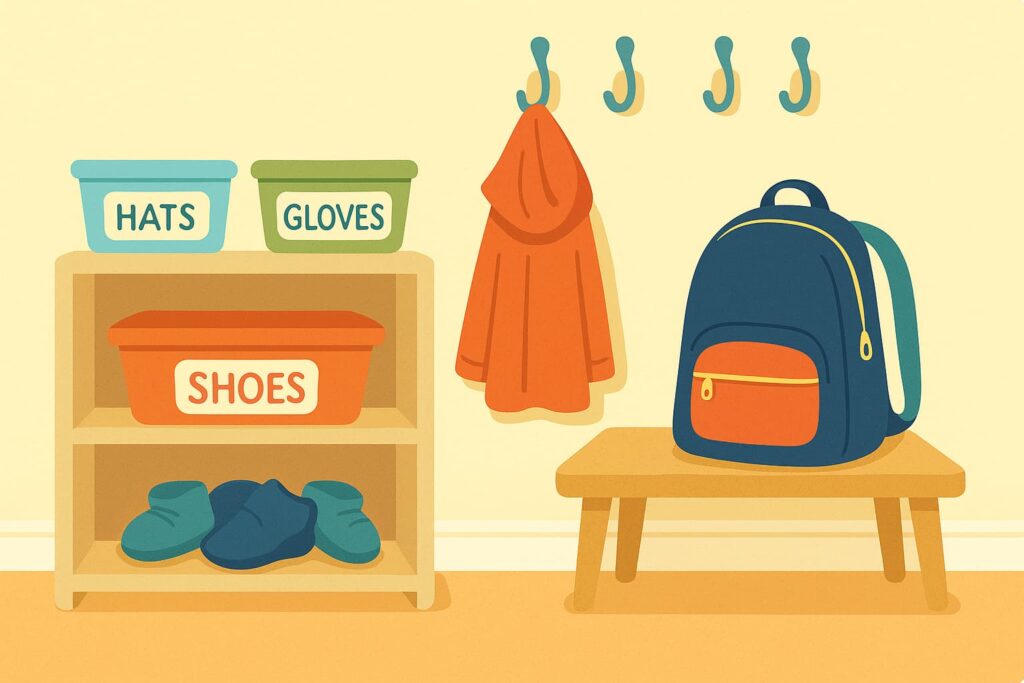Morning Routine for Kids: How to Build a Calm Start to the Day
Getting out the door on school mornings can feel like a high-stakes race — mismatched socks, last-minute lunch packing, and a trail of cereal on the floor. Sound familiar? You’re not alone. The good news is, building a consistent morning routine for kids can bring order to the chaos. It doesn’t have to be perfect, just predictable. In this guide, I’ll walk you through simple steps to help your child start each day feeling calm, capable, and on track for learning.
Visual Schedule
No products found.Visual Timers
No products found.Morning Essentials Caddy
No products found.What We’ll Cover
- Why morning routines matter for school success
- Steps to build a stress-free routine that sticks
- Tips for organizing supplies and setting expectations
- Printable or visual tools to keep kids on track
Free Printable: Morning Routine Checklist for Kids
Make mornings smoother with this visual routine guide. Use it as a fridge-friendly checklist to help your child build independence and start the day calm and ready.
Why Morning Routines Matter
Research shows that routines help children feel secure and more in control — especially in transition times like waking up and heading to school. A solid morning routine for kids lays the groundwork for better behavior, time management, and even academic success. When kids know what to expect, they’re less likely to resist or feel overwhelmed.
Step 1: Set the Stage the Night Before
The best morning routines start the evening before. A few prep steps can reduce decision fatigue and morning stress:
- Lay out clothes (or let your child choose from two options)
- Pack backpacks and check for papers or permission slips (Need help keeping school papers organized? Check out our guide on how to organize school papers at home.)
- Prep lunchboxes or snacks if needed
Step 2: Build a Predictable Wake-Up Routine
Children thrive on consistency. Whether your child is an early bird or slow to rise, sticking to the same wake-up time every weekday helps regulate their internal clock. Start with a gentle wake-up method — soft lighting, music, or a favorite good morning phrase.
Follow up with the same basic order each day: get dressed, brush teeth, eat breakfast. The goal is to make it automatic over time — fewer arguments, more momentum.
Step 3: Use Visual Schedules for Younger Kids
For preschool through early elementary students, visuals can make a big difference. A picture-based morning chart can walk them through the routine step-by-step without constant reminders from you.

Step 4: Keep Breakfast Simple and Predictable
Mornings are not the time for culinary experiments. Choose a few go-to breakfast options that your child likes and can eat quickly. Prep ingredients the night before, or even batch prep pancakes, muffins, or smoothie bags on weekends. Packing lunch too? Here’s how to pack a stress-free school lunch.
“The less you have to think about breakfast, the smoother the rest of your morning becomes.”
Step 5: Create a Launch Pad Zone
Designate one spot near the door for everything that needs to leave with your child: backpack, water bottle, lunch, jacket, library books. This “launch pad” makes it easy for kids to grab and go, and cuts down on frantic last-minute searching.
If space allows, add a bench or hook for bags and a small shelf or bin for shoes and accessories.

Step 6: Add a Morning Playlist or Timer
Music is a powerful motivator. Create a short playlist that becomes your morning soundtrack — one song for brushing teeth, another for getting dressed, and so on. It sets the pace and helps keep time without nagging.
Alternatively, a No products found. or No products found. can help older kids learn time management skills and move independently through their routine.
Looking to support independence? Try setting up a homework station that reinforces routine and focus.
Morning Routine for Kids: Common Pitfalls to Avoid
- Doing everything for them: Give your child small responsibilities. Independence builds confidence.
- Overcomplicating the plan: Stick to 3–5 key tasks for younger kids.
- Changing the schedule often: Routines thrive on repetition. Keep changes to a minimum.
Final Thoughts: Consistency Over Perfection
The goal isn’t to have a flawless morning every day — it’s to build habits that make things smoother over time. With a consistent morning routine for kids, you’ll not only reduce stress, but also set your child up for a more confident, focused school day. Ready for the school year? Explore our grade-level supply lists for Kindergarten through 5th grade.
Want more help with home routines? Check out our articles for parents containing how-to guides.
🍯 More Buzz from the Hive
Last update on 2025-11-21 / Affiliate links / Images from Amazon Product Advertising API
